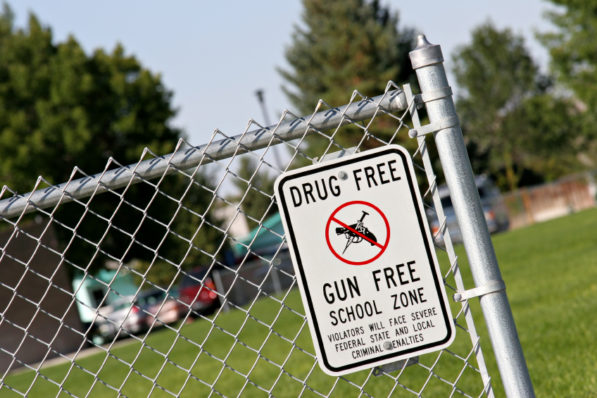Opinion: Should Teachers be Armed?
- Wednesday, 25 July 2018 09:44
- Last Updated: Wednesday, 25 July 2018 11:03
- Published: Wednesday, 25 July 2018 09:44
- Emmeline Berridge
- Hits: 5228
 Fire-drills at Scarsdale High School haven’t been the same since Nikolas Cruz pulled the alarm at Marjory Stoneman Douglas High School on February 14th, luring students and teachers into the hallways and firing his AR-15 into the vulnerable crowd. Each time the alarm blares in Scarsdale’s moldy tile halls, there’s a moment of doubt as students contemplate whether it's worth evacuating the building. It’s a new normal.
Fire-drills at Scarsdale High School haven’t been the same since Nikolas Cruz pulled the alarm at Marjory Stoneman Douglas High School on February 14th, luring students and teachers into the hallways and firing his AR-15 into the vulnerable crowd. Each time the alarm blares in Scarsdale’s moldy tile halls, there’s a moment of doubt as students contemplate whether it's worth evacuating the building. It’s a new normal.
Since the May 18th school shooting at Santa Fe High School where 10 people were killed, the Governor of Texas announced a plan to give extra funding to schools that train and arm teachers. As Generation Z becomes the school shooting generation, with 16 publicized fatal school shootings so far in 2018, districts like San Antonio weigh the practicality of arming teachers in schools for protection -- and rightfully so. Something has to be done to protect our schools.
Put simply: teachers shouldn’t be armed. Arming teachers promotes discomfort and heightens pre-existing tensions in classrooms. The presence of loaded killing machines in classrooms dilutes the comfort and respect required to promote learning. Having a physical symbol of violence and fear in a place of supposed openness jeopardizes this atmosphere. Children are already exposed to violence in the media and on the streets, and schools should be safe havens in order to be effective. The National Association of Secondary School Principals noted that “Firearms in principals’ and teachers’ hands might do more harm than good” because schools “must be perceived as safe havens” in order to be “effective”. Students must trust their teachers in order to be receptive to learn from them. By arming teachers, the student-teacher relationship is inevitably altered. As mentioned by NEA VP Becky Pringle, arming teachers is like prison, with teachers acting as “armed guards” and students being “prisoners”. And frankly, teenagers don’t need any more reasons to cut class.
Based on an online survey polling teachers in public schools across the nation, almost three-quarters of educators say they would not bring a firearm to school even if allowed. Its worthy to consider that if most teachers don’t want to be armed, it would be difficult to rely on them to respond in an emergency situation. And even taking into account the quarter of teachers who would arm themselves, who’s to say if a qualified gun toter would respond properly? In the Parkland school shooting, the armed security guard on site fled the school out of panic. He went through the 132 hours of certification required to carry a gun in a school, yet was unable to perform when it mattered. In Seaside, California, a math teacher and reserve police officer accidentally fired a gun inside a classroom, injuring three students. In Alexandria, Virginia, a school officer accidentally shot his weapon while sitting down in his office. The officer was “highly trained in firearm safety”, per the district’s superintendent. It would be more useful to improve external security, including more intensive training for school security guards.
If teachers don’t own weapons at home, who will pay for them? Most teachers make almost a quarter less salary each year than their peers with similar education levels. I’m guessing that ammunition would be one of the more pricey items on a teacher’s school supply list.
Parkland has reminded all of us that no one is immune to these tragedies. It’s not wrong to take into account all possible solutions to address the major epidemic plaguing our nation’s schools. But fighting firearms with more firearms is not the answer. There have been 290 school shootings in the US since the Sandy Hook massacre in 2012. To put that number in perspective, the casualties are equivalent to an American kid dying by gun every other day since Sandy Hook. Let’s not increase the risk more.
Emmeline Berridge is a rising senior at Scarsdale High School.










